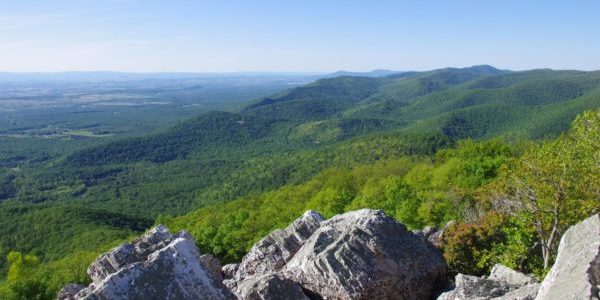Central Appalachian Forests: A Critical Biodiversity Area

Central Appalachian Forests
The Central Appalachian ecoregion spans the Appalachian, Allegheny, and Blue Ridge Mountain ranges in northwestern North Carolina to southern Pennsylvania. This ecoregion consists of many geologic variations as well as contains the largest drainage divide in the eastern United States between the Atlantic Slope and Mississippi Valley rivers. This region is characterized by several different forest types as species composition varies with geology, elevation, and aspect. Common characteristic canopy species at lower elevations include oaks, hickories, and tulip poplar. At higher elevations common species include sugar maple, yellow birch, oaks, and eastern hemlock.
While the forests in Central Appalachia provide valuable ecosystem services, they are threatened by several human-caused factors. One of these threats includes hydrologic alteration and degradation, leading to reduced quality of aquatic habitats.
Aquatic Systems in Central Appalachia
Central Appalachian forests host a diverse amount of plant and animal species. This diversity is exceptionally high due to two main factors: lack of glaciation in the southern reaches of this region, and a high variability of microclimates. Additionally, this region is one of the richest temperate freshwater regions in the world and it contains parts of the Ohio, Tennessee, Cumberland, and Mobile River drainages, which are global hotspots for freshwater fish and invertebrates.
Futher reading
Chapman, Julia I., and Ryan W. McEwan. “Tree Regeneration Ecology of an Old-Growth Central Appalachian Forest: Diversity, Temporal Dynamics, and Disturbance Response.” The Journal of the Torrey Botanical Society 139, no. 2 (2012): 194–205.
Fredericksen, Todd S. “Impacts of Logging and Development on Central Appalachian Forests.” Natural Areas Journal 18, no. 2 (1998): 175–78.
Grace, J. 2005. Forest operations and water quality in the South. Transactions of the ASAE, Vol. 48(2): 871-880.
Loucks, C., D. Olson, E. Dinerstein, A. Weakley, R. Noss, J. Stritholt, and K. Wolfe. “Appalachian Mixed Mesophytic Forests | Ecoregions | WWF.” World Wildlife Fund. Accessed June 19, 2020.
Maigret, T., et al. 2014. Effects of timber harvest within streamside management zones on salamander populations in ephemeral streams of southeastern Kentucky. Forest Ecology and Management.
NatureServe. “Central Appalachian Forest Ecoregion.” Landscope America, 2020.
Rainforest Alliance. “Sustainable Forestry in Appalachia.” Rainforest Alliance, September 15, 2016.
Water Resource Committee. “Implementation of Forestry Best Management Practices: A Southern Region Report.” Southern Group of State Foresters, June 2008.
Weakley, A., Michael P. Schafale, K Patterson, L Sneddon, and M Payne. “Liriodendron Tulipifera - Tilia Americana Var. Heterophylla - Aesculus Flava Forest Alliance.” NatureServe Explorer 2.0, January 8, 2014.
Stay Informed
about our recent projects and upcoming events.
